this scaffold is magic!!!
Download PDF of scaffold here.
theory behind the scaffold…
‘Intelligence is not necessarily hereditary. Education can transform a child’ asserts Karl Witte*, a pioneer in blended learning. We have the tools, he says, to help our students to change the course of their academic and then professional lives, no matter the level of their abilities before they enter our classes. First we have to believe this concept (have high expectations), and then we need to be proactive in presenting the appropriate tools to our students. We fill our lessons with activities and techniques that will give them opportunities to build a solid foundation of knowledge upon which they construct their thinking. We identify and elucidate academic language before beginning a lesson, unit or project, and create exercises geared toward developing verbal, oral, and aural skills.
Academic language is so important that experts assert that the warehouse of words a person has stored away is directly connected to their quality of thinking: higher quality of words equals higher quality of thinking.** In this age of the Fourth Industrial Revolution, the quality of thinking our students reach in our classes, will be the difference between being qualified for jobs that technology is (still) not capable of performing, and watching the world from the sidelines.
This applies even to our youngest learners. We can help them to assimilate academic language even before they begin to read. If we verbalise first-, second- and third-tier words,*** through dynamic activities, we are helping them to become familiar with academic language that will serve them for the rest of their academic and professional lives.
The examples given here target 1) every day school supplies and 2) ways you can approach the reading of stories in your classes. You´ll see how you can adapt it to any other topic you’re about to introduce.
**Zwiers, Jeff Academic Conversations: Classroom Talk that Fosters Critical Thinking and Content Understandings
***Beck, Isabel L. Creating Robust Vocabulary
step by step…
- Choose 5-10 images from the unit, story, or song your students are about to begin. Place them in textboxes. (See Template.)
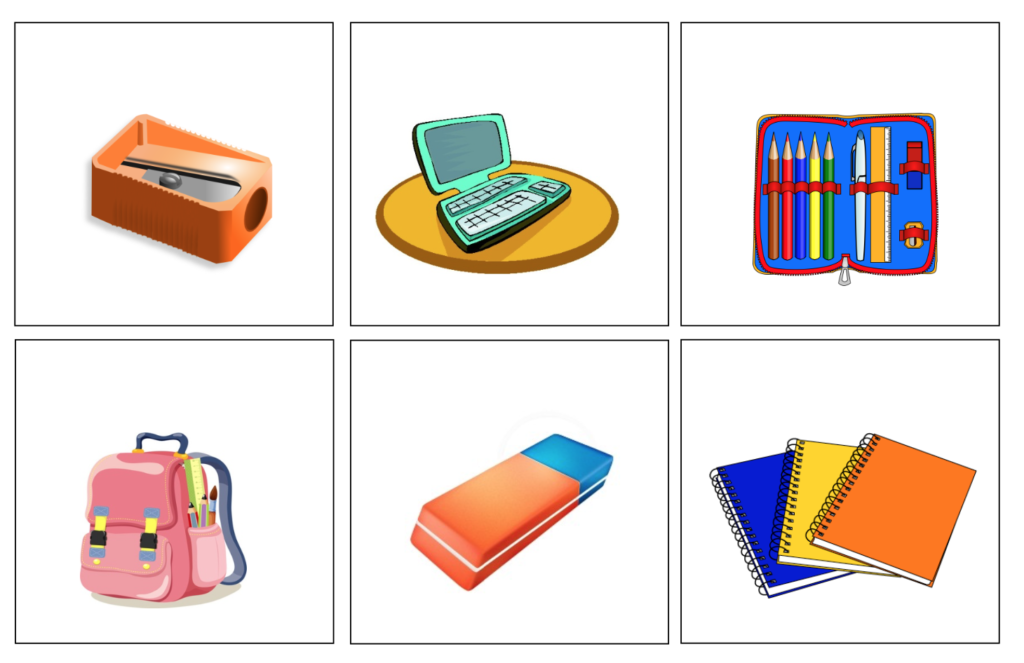
- Print them out, project them on the white board, and/or give sets of these to your students.
- Show 4-6 images at a time. Verbalise the image linguistically and in full sentences, and your students repeat the full sentences. (Example: ‘This is a pencil sharpener.’ ‘This is a school bag.’ )
(If you want to get advanced, you can include its uses. (Example: ‘This is a pencil sharpener. We use it to sharpen pencils.’ ‘This is a school bag. We use it to carry school supplies.’)
- If you have given all of your students a set of the images, you ask them to place the same images in front of them. For the youngest learners, this will help them to kinesthetically connect to the lesson.
- Once you have shown all the images at once, show the next slide which has one image less than the previous slide. (If you had 4 images on the first slide, show 3 of these images on the second slide. (See example below.)
Students with the images in front of them will be removing the images themselves and so it may seem counter-indicated to include this step in this type of activity, but for 3-year-olds, it will help them to assimilate the dynamic and the information.
- The activity continues until you are satisfied that the students have learnt the words/images thoroughly.
- Formative Assessment: Show PPT with individual images and ask pairs of students to verbalise what they see – in full sentences.
- Reflection: Ask students to talk to their partners and decide how they liked the activity. How did it make them feel to verbalise images, to try to remember the image that was missing, to take control and remove one of the images themselves?
*Witte, Karl (1914). The Education of Karl Witte: Or, The Training of the Child. New York, Thomas Y. Crowell Company.
**Zwiers, Jeff & Crawford, Marie (2011). Academic Conversations: Classroom Talk that Fosters Critical Thinking and Content Understandings, USA, Stenhouse Publishers. ***Beck, Isabel L. (2008). Creating Robust Vocabulary, New York, Guildford Publishing
You can do the same with images from a story you are about to read. (See an example below taken from the beautifully illustrated story The Red Dragon by Roseanne Thong.)
In this case, you can include images, colours, objects, animals, landscape, etc. You can use a variety of themes especially if and when you repeat the story.
video explanation of scaffold…


Scaffoldingmagic.com is your entryway into DYNAMIC bilingual learning methodologies, such as Phenomenon-Based Learning, CLIL, EMI, and ESL. You’ll find ways to implement critical thinking tools (DOK) to promote higher level thinking, the growth mindset, instill an ethic of excellence, deep reflection on learning, and all through multi-cultural, interdisciplinary activities. We have the keys to turning competences into action and to creating collective efficacy in your school so you move ahead as a unified, enthusiastic team.




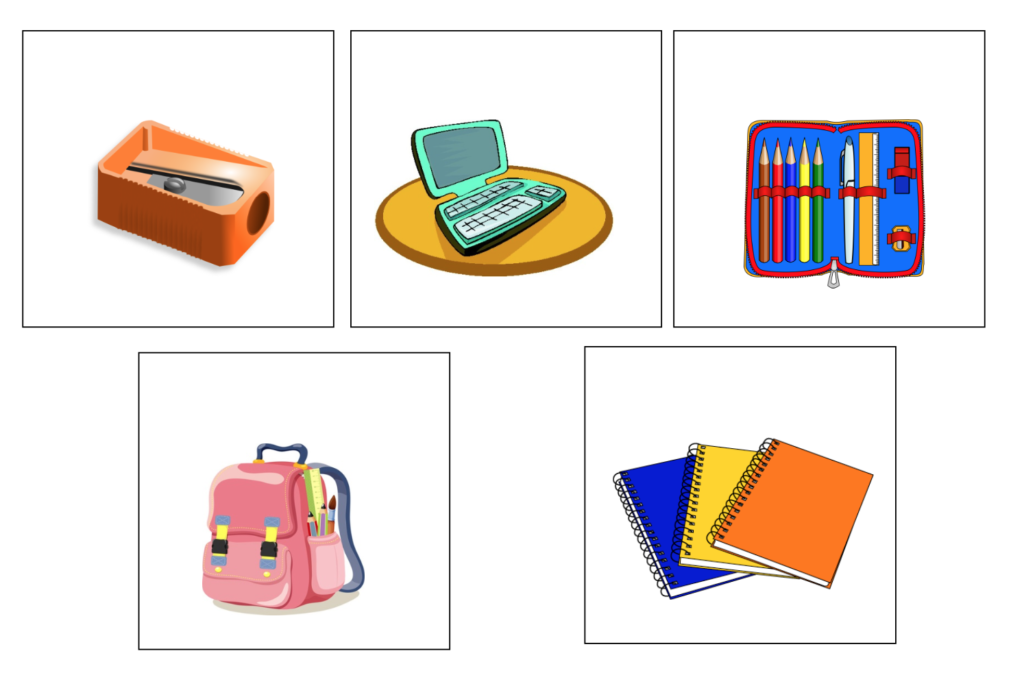
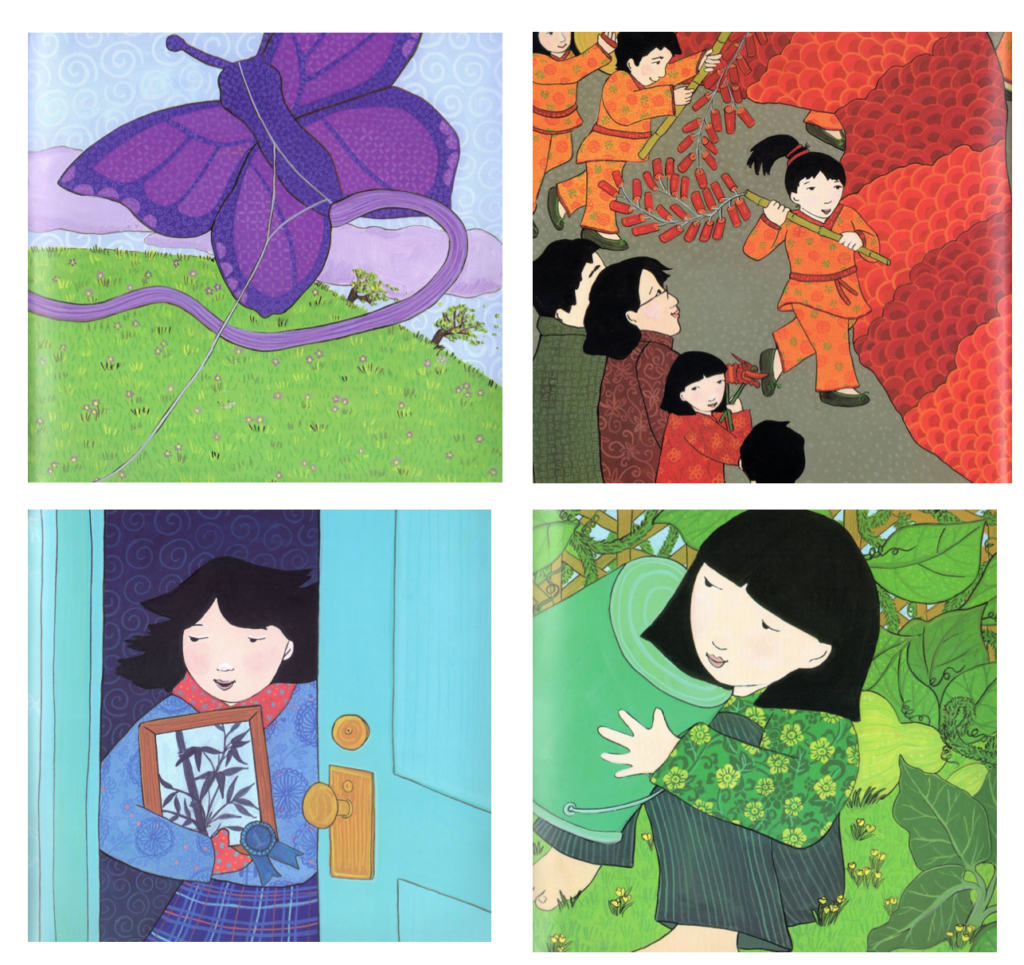
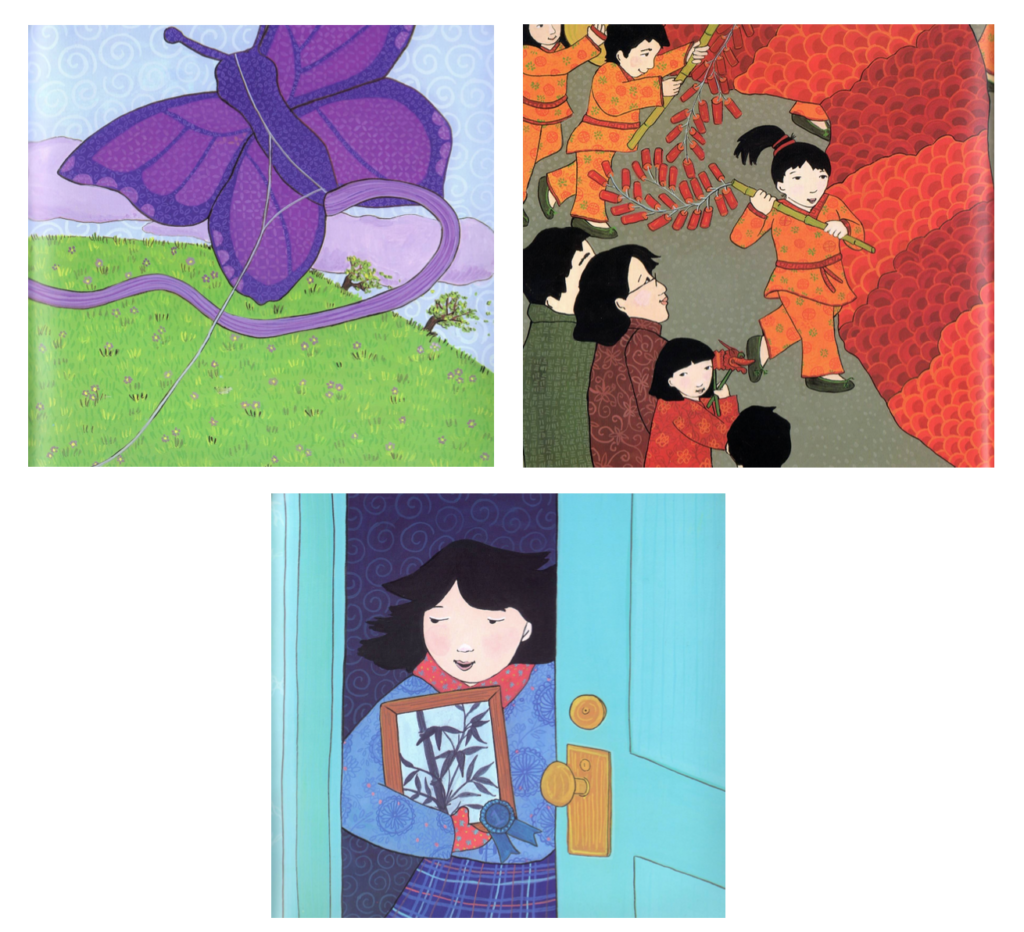
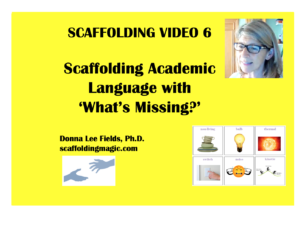

Pingback: SCAFFOLDING VIDEO 6 - Scaffolding Magic